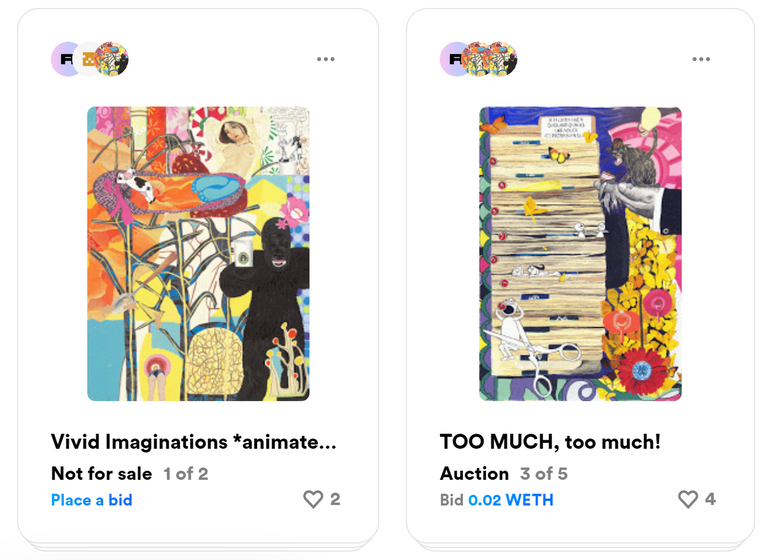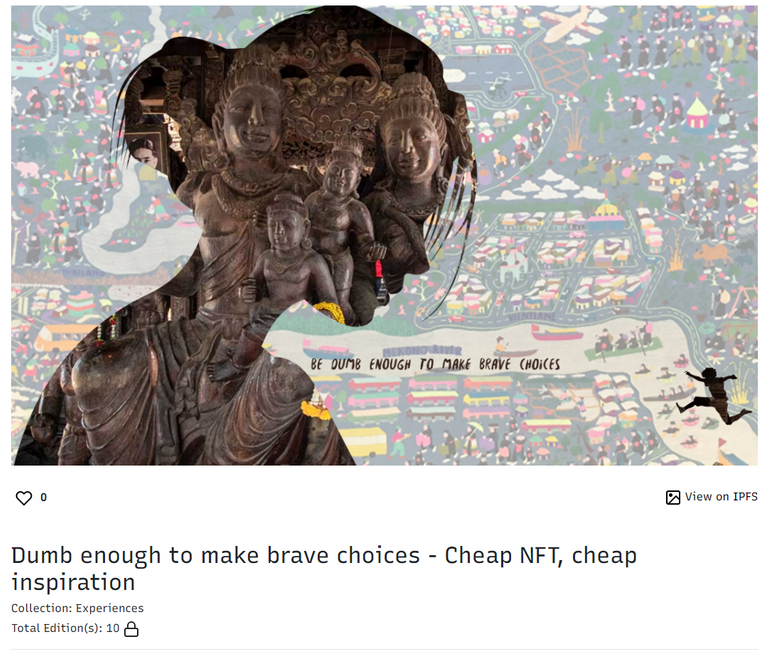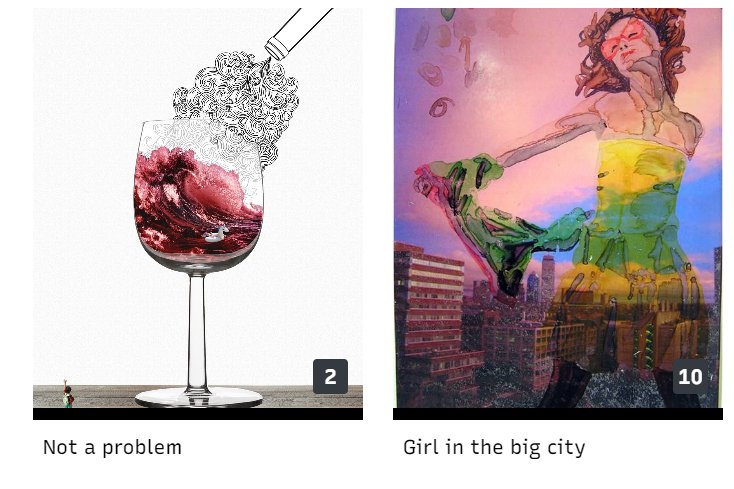In my quest to try selling art on every NFT platform in the world, I've discovered an interesting quirk about the NFT-verse. It seems that every platform, and every community, has it's own vibe. What sells well through one marketplace completely bombs on another. Price points that seem low in comparison to other pieces on an ETH network seem astronomical on an alt-coin platform. And it's amazing how much knowing your market makes a difference.
ETH Networks
Take, for example, Rarible or OpenSea. I've put some of my favorite pieces on these platforms because they were the first I discovered. I didn't realize until after minting my art that there were alternatives that would allow me to avoid high gas fees. The work I've shared is work I'm incredibly proud of, and I truly believe is worth the $100-$300 I've asked for it (the physical pieces sold quickly for $300-$400).
What I've learned from a lot of attempted collecting, minting, and critiquing is this: ETH based networks are crowded. And they're full of big-spenders. They also have thousands of incredibly talented artists with already established customer bases competing against astronaut-filled-crypto-art and popular collectibles. Public rankings and activity boards drive up prices for specific pieces that bleed over into the artist's entire collection, inflating prices like crazy. It's rare to find something under $100 that's halfway decent. The upside of this is that high price points are not only acceptable, they're assumed. The downside is that it's nearly impossible to make a sale unless you have a huge customer/fan base already established.
My work on these sites has sold for a ridiculously wide range of prices. This specific piece has two sales, one at about $49 and the other at $900. What a spread!

With gas fees and minting fees, I've just barely done better than break even (if you pity me, I'll take it! Go ahead and wander on over to OpenSea or Rarible to help a girl out ;) ). Even with a few higher sales, getting verified by Rarible is delayed by months and there's no guarantee they'll approve me (my verification is still pending after about 2 weeks).
So what's the takeaway?
If you're going ETH-based and mainstream, establish a customer base first. Do not mint until you already have buyers lined up. And when you do mint, make sure you're choosing your highest quality work and pricing it high enough to cover fees. Remember, people expect to pay more on these platforms anyways.
SIGN-Art
I recently signed up for SIGN-Art which uses $WAVES and $SIGN for transactions. It's still a new platform and I was one of the first 168 users to be accepted as an artist. What I found is that most of the pieces are priced relatively high (over $100 and up to $10,000), and the quality of art is at least decent. It's also incredibly confusing buying SIGN for the first time as you need to go through a proper exchange rather than just swapping on a site like BlockTrades.
What I saw was a need. Buying your first NFT on this site can be confusing considering the lesser known coin, $SIGN, and the difficult exchange process. It can also be expensive for what's essentially a gamble. The secondary market is coming but hasn't been released yet, so as of today, all purchases are permanent. So people probably want a low-risk option for starting their collection, right?
Well, I went with the super cheap NFT model since no one else was doing it on the platform and my first 4 mints all sold out in 24-72 hours. You can only mint 10 editions of any item, but all in all I made about $60 for maybe an hour's worth of work. I'm slowly edging my prices up from $1 to $5 a piece. These aren't my best pieces of art, but I did at least come up with some GIFs I'm not embarrassed by. I also burned a few of my NFT Showroom pieces and put them up on SIGN-Art since sales have been so quick.

Main takeaway:
New alt-coin platforms are perfect for a cheap NFT model. Sales are generally easier to come by but are usually lower amounts. You also have slightly lower quality of work overall (although some artists are better than those on SuperRare or MakersPlace).
NFT Showroom
And lastly, our beloved NFT Showroom. This was my first non-ETH based platform and it holds a special place in my heart. That being said, I haven't quite figured it out. My best sales have been those in the $10-$75 range. Generally simple, quality images, that aren't too high in price do well for me.
I tried the cheap NFT model with my kid's Pig Monkey that I'm especially fond of, as well as my recent 6 Hive "Dumb Enough to Make Brave Decisions". Pig Monkey has sold 7 and Dumb Enough... sold 1 in the first hour but it's too soon to know what else will happen. Either way, it's nowhere near the quick sell-outs I have on SIGN-Art.

That being said, I've had the most like selling Not A Problem (75-100 Hive) and Girl in the Big City (25-35 Hive). Both are relatively simple still images. Both had reasonable prices without being "cheap".

The main takeaway is this...
This seems to be the place that NFT Showroom sales happen most - good art, reasonable prices. I'm selling Walmart style through SIGN-Art, but Target style through NFT Showroom. The product is good, but it's not something you'll resell for $100,000 (probably). And it's priced reasonably, so you don't need to feel guilty :)
In Conclusion
As I learn more about the different platforms, it's interesting to see how investor behavior will evolve in different ecosystems. Also, I realize my experience and successes may be different than other artists. Because of that, I'd love to hear everyone else's experience.
Comment with any observations you have and we can all meet the desires of different buyers on different platforms because more info = more sales. More sales = more money. Plus, sharing feedback is a great way to help each other out :)